I only had 24 hours in Canada's oldest city, but my visit impressed me so much, I'm already planning a trip back
Joey Hadden

- I recently spent one day in Québec City, Québec, during a train trip through Eastern Canada.
- I explored Old Québec and stayed at the Fairmont Le Château Frontenac, a historic luxury hotel.
I recently went to Québec City for the first time. I only had 24 hours in the French-Canadian city, but now I can't wait to go back.
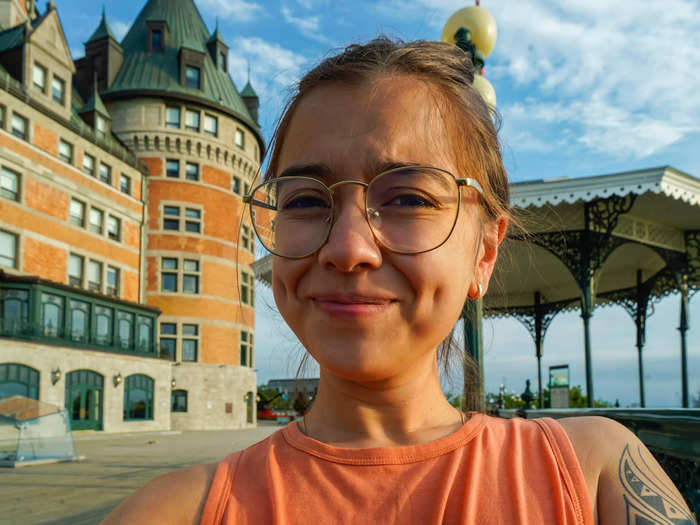
I took a train trip up to Eastern Canada from my home in NYC in August 2022 to explore Niagara Falls and Toronto in the province of Ontario, as well as Montréal and Québec City in Québec.
It was my first time visiting Canada, and I left thinking I wished I'd had more time in each place. I booked three nights in Niagara Falls and only one night in Toronto, Montréal, and Québec City.
Of all the locations I visited, Québec City was the one I knew the least about. I was expecting the 400-year-old French-Canadian city to be filled with French signage and storefronts and old-world architecture, but I didn't think it would feel as frozen in time as it did.
Located in the Eastern Canadian province of Québec, the city drew me in with its dramatic historical buildings and charmed me with quaint cobblestone streets lined with colorful, modest buildings.
I left Québec City longing for more time to explore, shop, and dine.
I traveled to Québec City by train and stayed in the neighborhood of Old Québec, where I explored nearby streets and parks.
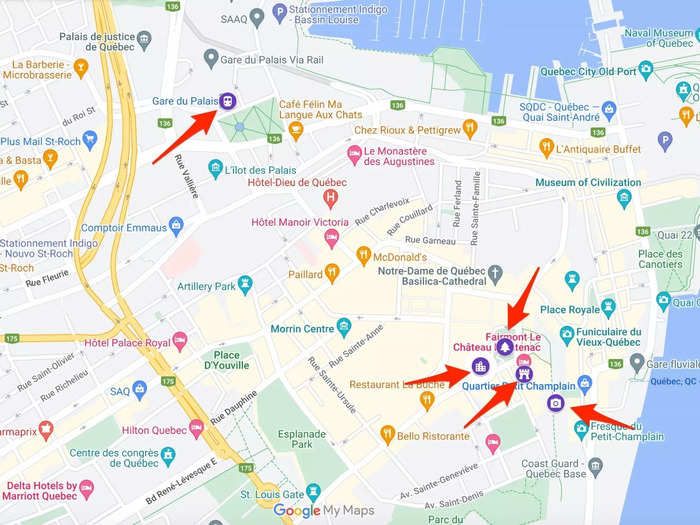
Québec City is the capital of Québec, a province in Eastern Canada. Founded in 1608 by French explorer Samuel de Champlain, it's also the oldest city in Canada, according to the city's website. Québec City was conquered by the British in 1759, until it became part of Canada in 1867, according to the same source. But still carries on its French culture to this day thanks to the city's preservation efforts, according to Québec City's tourism website. The Government of Canada reports that more than 85% of the province of Québec speaks French.
I traveled to Québec City by train from Montréal and took a 20-minute uphill walk from the station, Gare du Palais, to the neighborhood of Old Quebec, where I stayed at the hotel, Fairmont Le Château Frontenac, which is famous for being the most photographed hotel in the world, according to World Atlas.
I spent my time in Old Québec exploring the hotel's surrounding photogenic streets. The hotel sits on a cliff overlooking the St. Lawrence River, so there are plenty of stunning views from the top of the streets below, dotted with red and yellow rooftops. Near Fairmont Le Château Frontenac, there are several narrow cobblestone roads lined with European-style buildings. I spotted Art Deco homes and storefronts with pops of color on an otherwise pale facade.
I stayed in Fairmont Le Château Frontenac, a historic luxury hotel, for about $600.
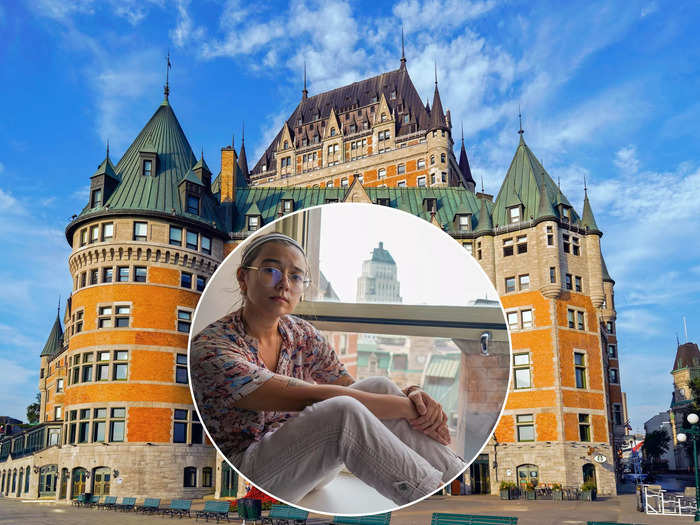
A UNESCO World Heritage Site, The Canadian Pacific Railway opened the hotel, Fairmont Le Château Frontenac, in 1893 to attract luxury train travelers traveling through Québec, AFAR Magazine reported.
The hotel was placed on the edge of Cap Diamant, a cliff on top of Old Québec, so passing train travelers could easily spot it, as it looks like a gigantic castle, according to AFAR. The hotel draws visitors with its Renaissance-style architecture, and today, it holds the reputation of the most photographed hotel in the world, according to World Atlas.
Aside from the 610 guest rooms, the hotel has publically accessible stores, restaurants, and hallways full of historical exhibits telling the story of Québec City with timelines and images. There are five restaurants at the hotel, including the landmark restaurant Champlain Restaurant, which features dishes from a world-class chef. There's also a spa, pool, and fitness center, which I didn't get a chance to see for myself since my stay in Québec City was so short.
I thought the Fairmont Le Château Frontenac was the most beautiful hotel I'd ever stayed at, and located in the ideal spot for sightseeing in Old Québec, a neighborhood that has been preserved for 400 years. Since it's on a cliff, the hotel offers dramatic views of the city streets below and the St. Lawrence River. And with so many nearby streets lined with shopping and restaurants, I didn't have to wander far to get a feel for the neighborhood.
I thought it was impressive inside, too. I noticed that the hotel's lobby had an elegant, classic style with dark-colored walls and medieval-looking light fixtures.
I booked a Fairmont room, the hotel's lowest tier room category. Fairmont rooms are between 175 and 220 square feet and are recommended for couples and solo travelers, according to the hotel's website. It cost $600 in the summer, but prices typically start at $160 in slower seasons, according to a recent search.
My first impression of my room was that it appeared small and plain, especially for a place to be considered the most photographed hotel in the world. But it had an amazing view of Québec City, which I appreciated.
Unlike any other hotel I've stayed in, I thought the Fairmont Le Château Frontenac looked like it came straight out of a fairytale. The exterior and public areas made me feel like I was in a palace. But since I was less impressed by the inside of my room, I'd probably stay elsewhere next time. In my opinion, it's only worth the $600 price tag if you're a fan of historic hotels or want to stay in one of the best locations in Québec City.
But I think it's still worth visiting, even if you're not staying there for the chance to admire it up close and photograph and explore the surrounding areas of Old Québec.
Staying at this hotel also allowed me to marvel at all of the European-style architecture that filled Québec City.
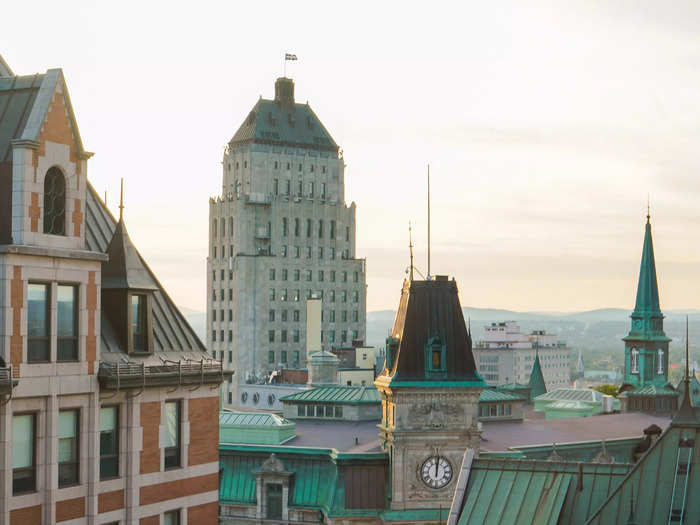
While the hotel room itself felt tiny, I thought the view from the window was anything but small.
Perched on the window sill, I could see the European-style architecture that filled Québec City as well as mountains in the distance. Since Québec City city was founded by the French and conquered by the British, there is a variety of architectural styles from British and French influences, like Neoclassical and Art Deco, according to Culture Trip.
I spotted old-world cathedrals like Notre-Dame de Québec Basilica-Cathedral, which has a Neoclassical style, with towers and stained-glass detailing, according to Québec City's website. I noticed government structures like the National Assembly building, L'Hôtel du Parlement, which was inspired by the Second Empire, a European architectural style that was popular between 1877 and 1887 Culture Trip reports.
Some of these buildings have been preserved for hundreds of years, according to the city's website. Viewing their details, like the statues of historical figures on the facades of Second Empire buildings and the turrets I spotted on the facade of the Fairmont Le Château Frontenac made me feel like I was traveling back in time. I'd love to return to Québec City to see them up close.
Next to the hotel, Duffin Terrace was one of the best viewpoints to take in the city, I thought.
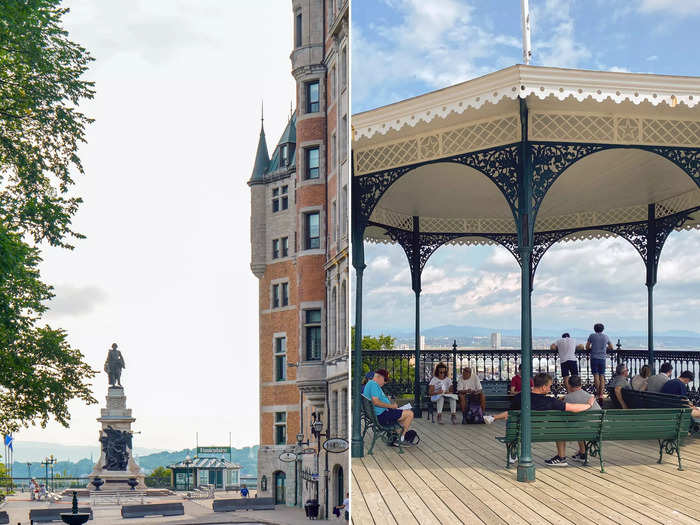
Duffin Terrace is a wide, wooden pedestrian walkway in Old Québec between the Fairmont Le Château Frontenac and the cliff overlooking the St Lawrence River that has been enlarged twice because it's so popular with tourists and residents alike, according to the city's website.
One huge reason people visit Duffin Terrace is to take photos, according to the same source. And after visiting for myself, I thought it was easy to see why.
I first visited the terrace around 7 a.m. after waking up in the Fairmont Le Château Frontenac. All I had to do was go downstairs and walk outside to be welcomed with a view of the St. Lawrence river on the quiet, empty boardwalk. Since the terrace and hotel are situated on a cliff, I had a high position to view the lower streets of Québec City. Leaning on the fence lining the terrace, I could see cobblestone streets and colorful rooftops below.
I returned to Duffin Terrace again in the afternoon to find the boardwalk had come alive with crowds of people taking a stroll or sitting on the benches next to the fences. Many had a phone taking pictures in one hand and ice cream in the other, as the terrace had a couple of restaurants and ice cream shops.
Québec City is filled with atmospheric shops, markets, and cobblestone streets.
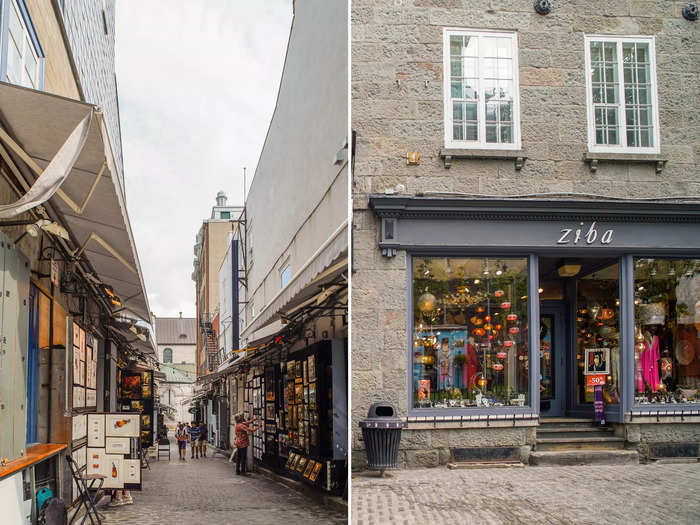
I spent a few hours exploring and photographing the streets of Old Québecfull of shops and restaurants, like Rue Saint-Jean, which is a hilly street that I explored.
On Rue Saint-Jean, I spotted street vendors selling art as well as gorgeous brick-and-mortar storefronts with elaborate window displays that made me wish I had the time, budget, and luggage space to shop.
But with little time to shop, I left Québec City without any souvenirs. Next time, I'll bring a larger suitcase to make room for the unique finds I imagine I would have found here.
During my short stay, I learned that you can't do Québec City in a day. There are so many grand sights and quaint streets that warrant a much longer trip to properly explore.
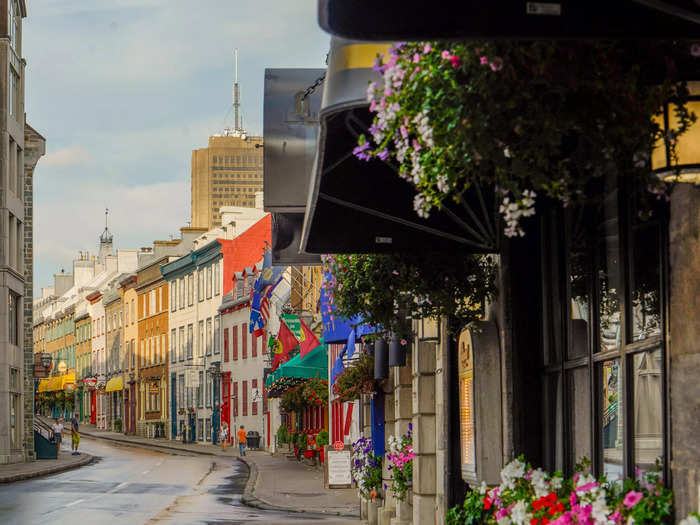
On my way to the airport leaving Québec City, I couldn't help but feel like my trip was just an introduction to the unique and beautiful city. Since I live in NYC, just a 90-minute flight away, I'll definitely be back to get a better sense of the culture and history of this place.
Popular Right Now
Popular Keywords
Advertisement